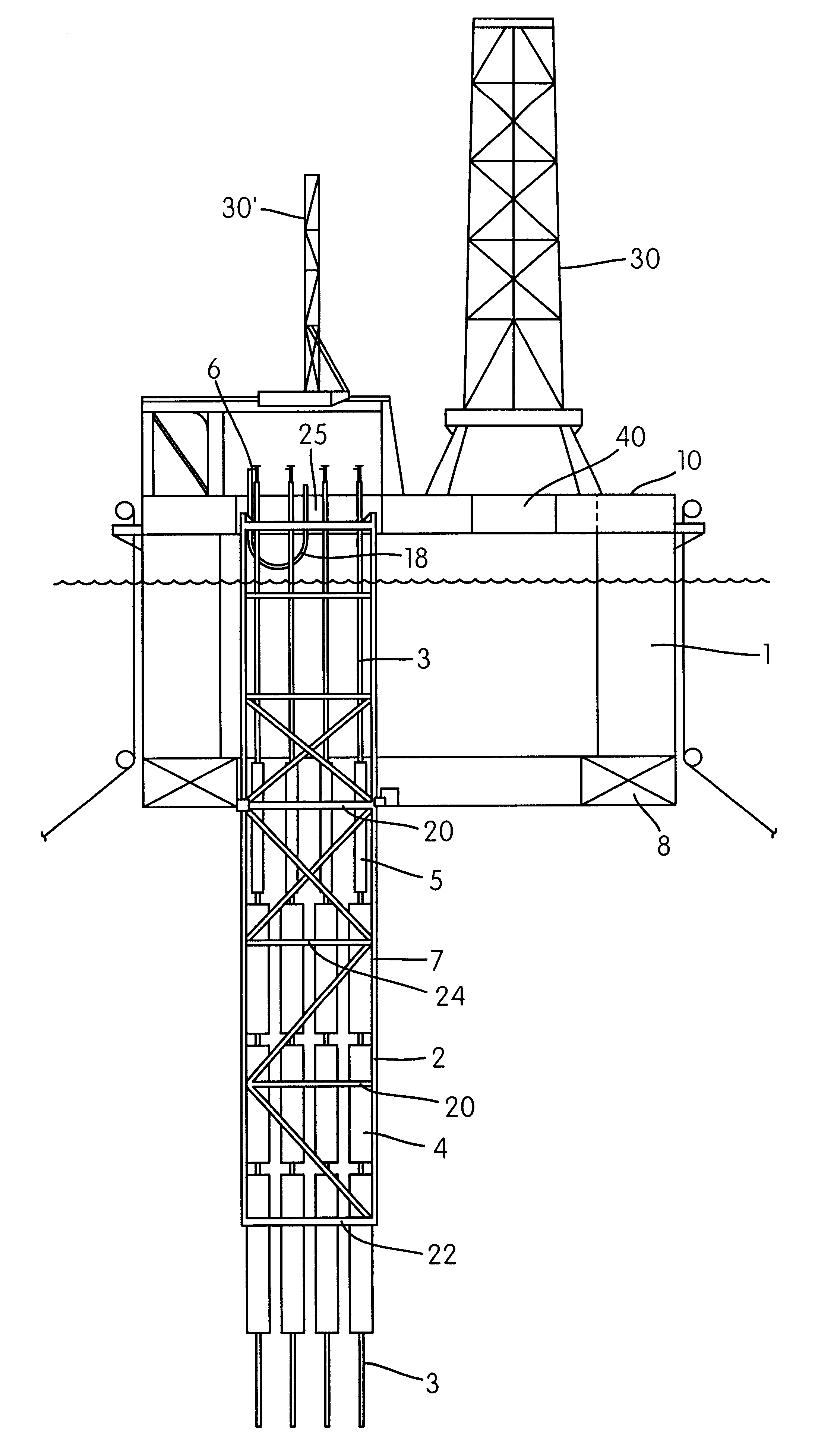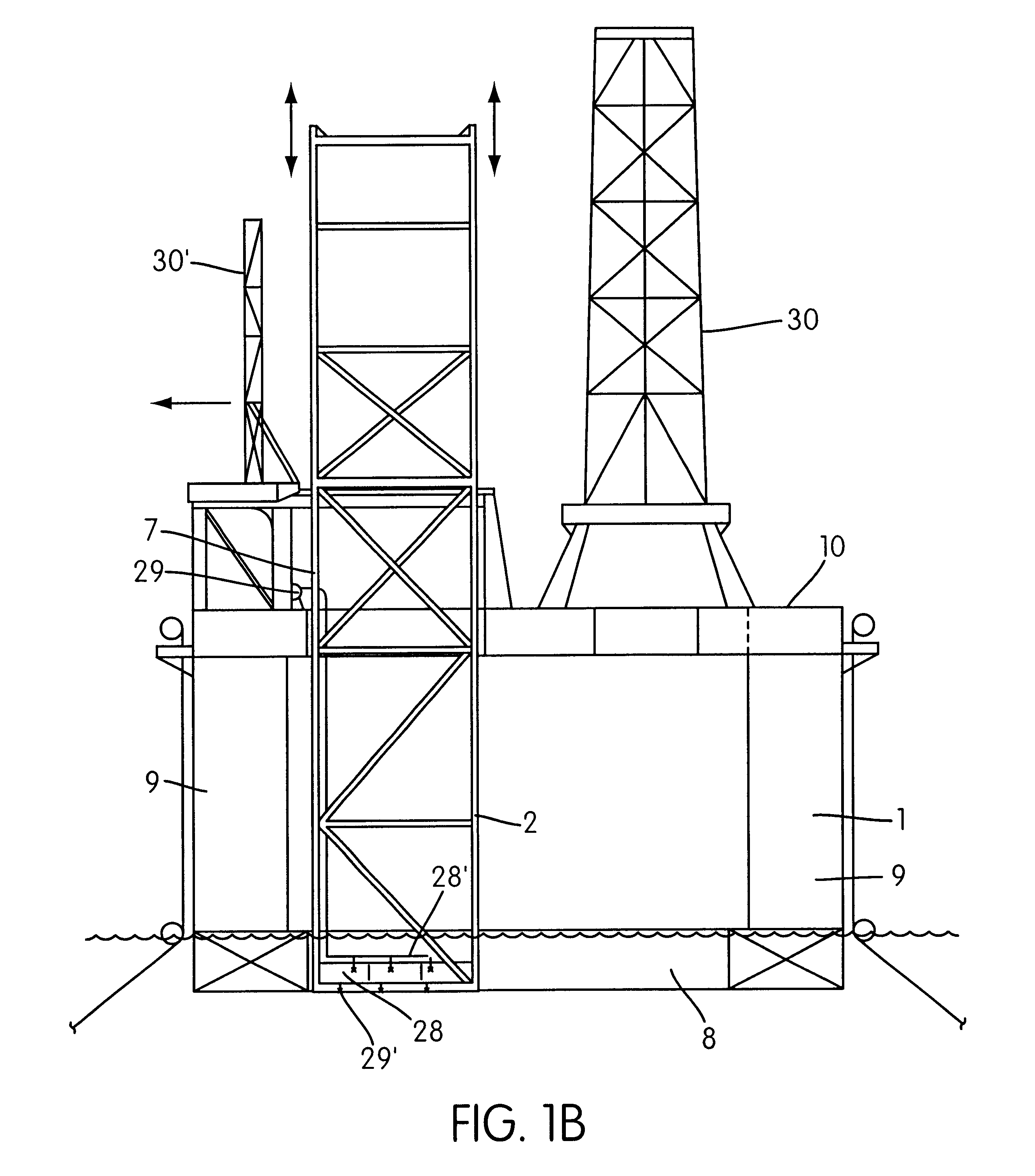Guide device for production risers for petroleum production with a "dry tree semisubmersible" at large sea depths
a technology of production risers and guide devices, which is applied in the direction of route marking with anchored lightships, floating buildings, bulkheads/piles, etc., can solve the problems of higher lifting and assembly costs, higher weight and price of heavier dimensioned steel plates, and increased drilling and dimensioning
- Summary
- Abstract
- Description
- Claims
- Application Information
AI Technical Summary
Benefits of technology
Problems solved by technology
Method used
Image
Examples
Embodiment Construction
FIG. 1a shows a vertical section of a system according to the invention, comprising a semisubmersible platform or vessel 1 with one or more pontoons 8. In a preferred embodiment, the vessel includes a ring pontoon 8, shown in partial vertical section with a guide frame 2 for one or more riser pipes 3. The guide frame 2 is shown arranged in a lower or "submerged" operational position, with the upper part of the guide frame 2 being arranged near the level of the main or weather deck 10 of the platform. In the lower operational position, the frame 2 extends through the splash zone and down through the most strongly influenced wave- and current-influenced zone, to a depth below the pontoon 8.
The guide frame 2 surrounds and guides one or more risers 3 and one or more main buoyancy members 4 and, in a preferred embodiment, auxiliary buoyancy members 5 arranged to carry the weight of the riser 3. The buoyancy members 4,5 are arranged separately on each riser. In a preferred embodiment of t...
PUM
 Login to View More
Login to View More Abstract
Description
Claims
Application Information
 Login to View More
Login to View More - R&D
- Intellectual Property
- Life Sciences
- Materials
- Tech Scout
- Unparalleled Data Quality
- Higher Quality Content
- 60% Fewer Hallucinations
Browse by: Latest US Patents, China's latest patents, Technical Efficacy Thesaurus, Application Domain, Technology Topic, Popular Technical Reports.
© 2025 PatSnap. All rights reserved.Legal|Privacy policy|Modern Slavery Act Transparency Statement|Sitemap|About US| Contact US: help@patsnap.com



